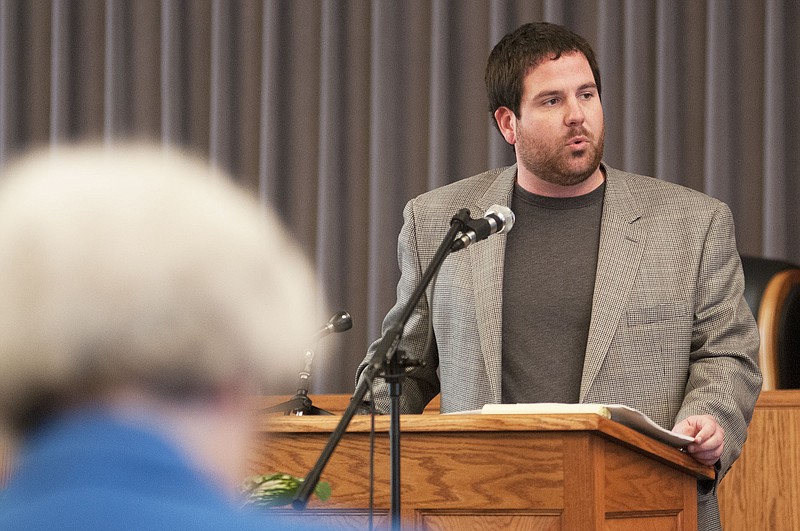As part of the Callaway Energy Center's request for a 20-year extension on its operating license, the U.S. Nuclear Regulatory Commission (NRC) held public meetings Wednesday in Fulton to discuss the first draft of its environmental impact statement on the plant.
Public comment was accepted to take into consideration for the NRC's final draft due in November, and plenty of it came from the Missouri Coalition for the Environment members in attendance.
The NRC's report so far has found the plant to be safe with negligible to no impact on the environment, but a written statement from the environmental group called it "a flawed report that underestimates the risk of environmental damages."
As the national regulatory body overseeing commercial use of nuclear materials, the NRC conducts a number of reviews over the plant and its operations before renewing licenses, including a Supplemental Environmental Impact Statement (SEIS), which addresses site-specific environmental issues for the Callaway plant.
NRC Environmental Project Manager Carmen Fells said that the report found the Callaway plant had a small impact - officially defined as effects that are "not detectable or are so minor that they will neither destabilize nor noticeably alter any important attribute" of resources used - on land use, air quality, geological environment, surface water and groundwater, aquatic and terrestrial resources, human health and socioeconomics.
She said the report also evaluated alternative energy sources such as natural-gas, coal, wind energy and new nuclear options and found them too cost-prohibitive or unable to meet the energy needs that the Callaway plant provides.
For Missouri Coalition for the Environment Safe Energy Director Ed Smith, the way the Callaway plant stored its used nuclear fuel rods was of greater concern.
As nuclear fuel is used and irradiated in a reactor, the radioactive rods left behind are stored on-site in deep pools of water, which the NRC's website nrc.gov states cools the fuel and shields workers from radiation. Though the spent fuel is typically moved to dry storage after five to 10 years in the pools, the Callaway plant's pool is expected to be at capacity by 2020.
Smith cited another NRC study related to the Peach Bottom Atomic Power Station in Pennsylvania that stated "even a small spent nuclear fuel pool fire could leave 9,400 square miles uninhabitable and displace 4.1 million people," and that based on his understanding of the regulations, the NRC was basing its spent fuel storage standards on outdated research conducted by the NRC before large-scale fallout events such as the Fukushima nuclear disaster brought on by the 2011 tsunami in Japan.
"I'm curious what the plan is for six years from now," Smith said. "They're not going to have a national repository for spent fuel ready in six years, I guarantee that."
For additional coverage, see Thursday's issue of The Fulton Sun or Jefferson City News Tribune.

